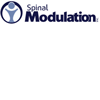Promising new data demonstrate that a novel pain therapy system manages patients with chronic neuropathic pain
Posted: 16 May 2013 | | No comments yet
Spinal Modulation Inc. designed the Axium™ Spinal Cord Stimulator System…


Spinal Modulation Inc., designed the Axium™ Spinal Cord Stimulator (SCS) System specifically to relieve chronic pain experienced by patients suffering from long-term nerve damage following surgery (chronic post surgical pain), complex regional pain syndrome (CRPS), amputation pain, or failed back surgery syndrome (FBSS). A study investigating the safety and performance of the system showed that after 6 months of treatment 70% of patients suffering from leg pain and 89% of patients suffering from foot pain reported clinically significant pain relief. 1
Chronic pain of moderate to severe intensity occurs in 19% of adult Europeans, seriously affecting the quality of their social and working lives.2 Chronic neuropathic pain has been shown to have a debilitating impact on quality of life, participation in community and social roles.3 The extent of the chronic pain problem poses a significant economic burden for patients, health services and societies alike.4
Chronic post surgical pain is caused from nerve damage resulting from a surgical procedure, for example inguinal hernia repair. If nerves are damaged during surgery some patients may develop long-term neuropathic pain. The number of people suffering from neuropathic pain and chronic post surgical pain is not well documented however, it is estimated that 30-50% of patients after amputation, 20-30% of women after mastectomy or lumpectomy, and 10% of patients after inguinal hernia repair suffer from chronic post surgical pain.5
“Instead of stimulating the back of the spinal cord, we can now stimulate important branches of the spinal cord, the Dorsal Root Ganglia (DRG). This small move laterally from the spinal cord to the DRG represents a leap forward in pain management. We now have a tool to treat focal areas of pain after injuries such as neuropathic foot pain, neuropathic knee pain, and groin pain after hernia repair or vascular access with minimal side effects such as unwanted stimulation, postural effects when moving, and lead migration which is common in traditional spinal cord stimulation,” commented Dr Liong Liem, lead author and consultant in anaesthesiology and pain medicine at St Antonius Hospital, Nieuwegein, The Netherlands.
Key results of the study published yesterday in Neuromodulation: Technology at the Neural Interface include:
- 89% of patients with foot pain were experiencing greater than 50% pain relief at 6 months1
- Patients did not experience significant positional effects from stimulation when standing or lying down, which is a common side effect of traditional spinal cord stimulation1
- Leads were stable over a six month period with only 2% lead migration (2 out of 67). This is compared to 13.2% average migration from 51 literature reviews of traditional spinal cord stimulation1
- Quality of life as measured by the EQ-5D improved from 0.289±0.054 (N=20) and 0.725±0.066 (N=15), respectively. The increase in the index value was statistically significant (p<0.001)1
- Pain severity scores were 6.9 (±0.2) at baseline and were significantly reduced during the study, with levels reaching 3.9 (±0.6) at 6 months (p<0.001)1
- Pain interference as described by the BPI improved from 6.6 (±0.4) at baseline to 4.1 (±0.5) (p<0.001), and maintained this level through 6 months post-implant1
- 2/3 of the patients suffering from back and leg pain were experiencing greater than 50% pain relief at 6 months.
“In my experience this novel approach to chronic pain management offers an important new option for patients suffering from chronic neuropathic pain. The Axium™ SCS System is associated with minimal side effects and has already advanced my ability to assist long suffering and difficult-to-treat patients across Europe.” said Prof Frank J.P.M. Huygen, author and Professor of Anaesthesiology Erasmus University, Rotterdam, The Netherlands.
References
- Liong L et al. A multicenter, prospective trial to assess the safety and performance of the spinal modulation dorsal root ganglion neurostimulator system in the treatment of chronic pain
- Breivik H et al. Survey of chronic pain in Europe: prevalence, impact on daily life, and treatment. European Journal of Pain 2006; 10: 287-333
- Phillips C et al. The Cost and Burden of Chronic Pain. British Journal of Pain 2009; 3:12-5
- Dagenais S et al. A systematic review of low back pain cost of illness studies in the United States and internationally. Spine 2008; 8: 8-20.
- Kehlet H et al. Persistent Post Surgical Pain: risk factors and prevention. Lancet 2006; 367: 1618-1625




